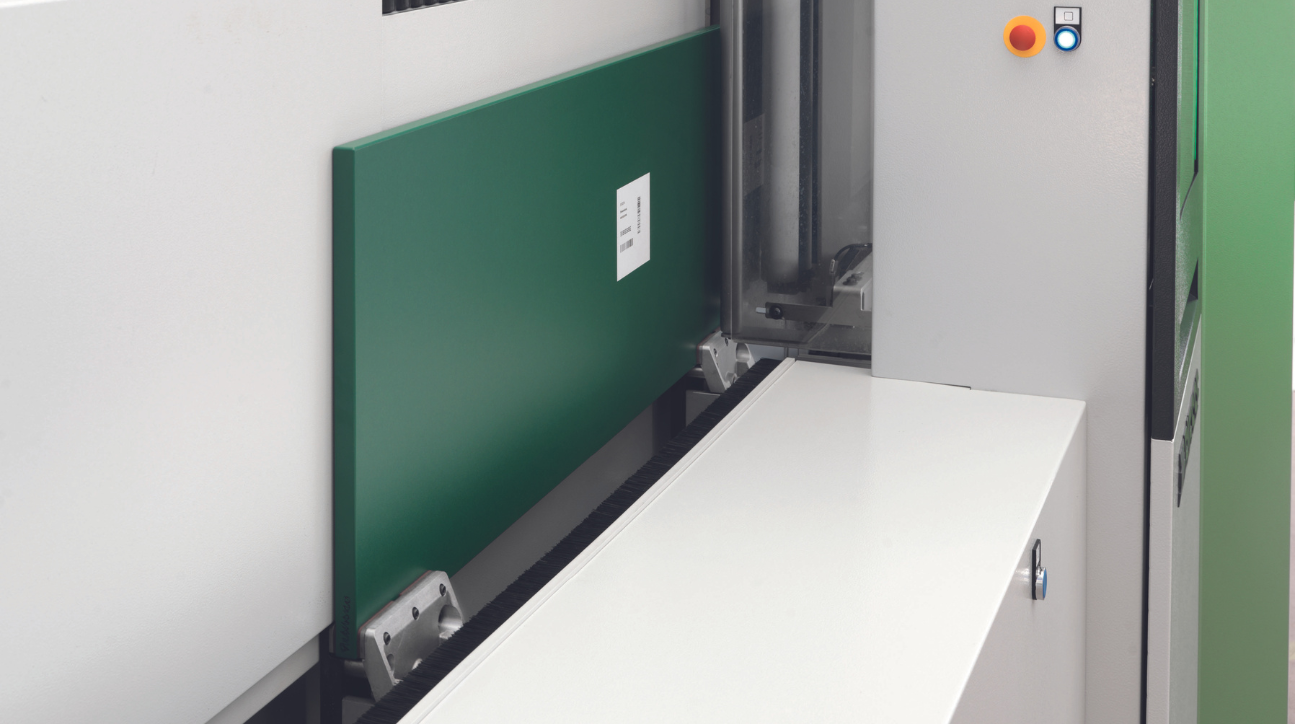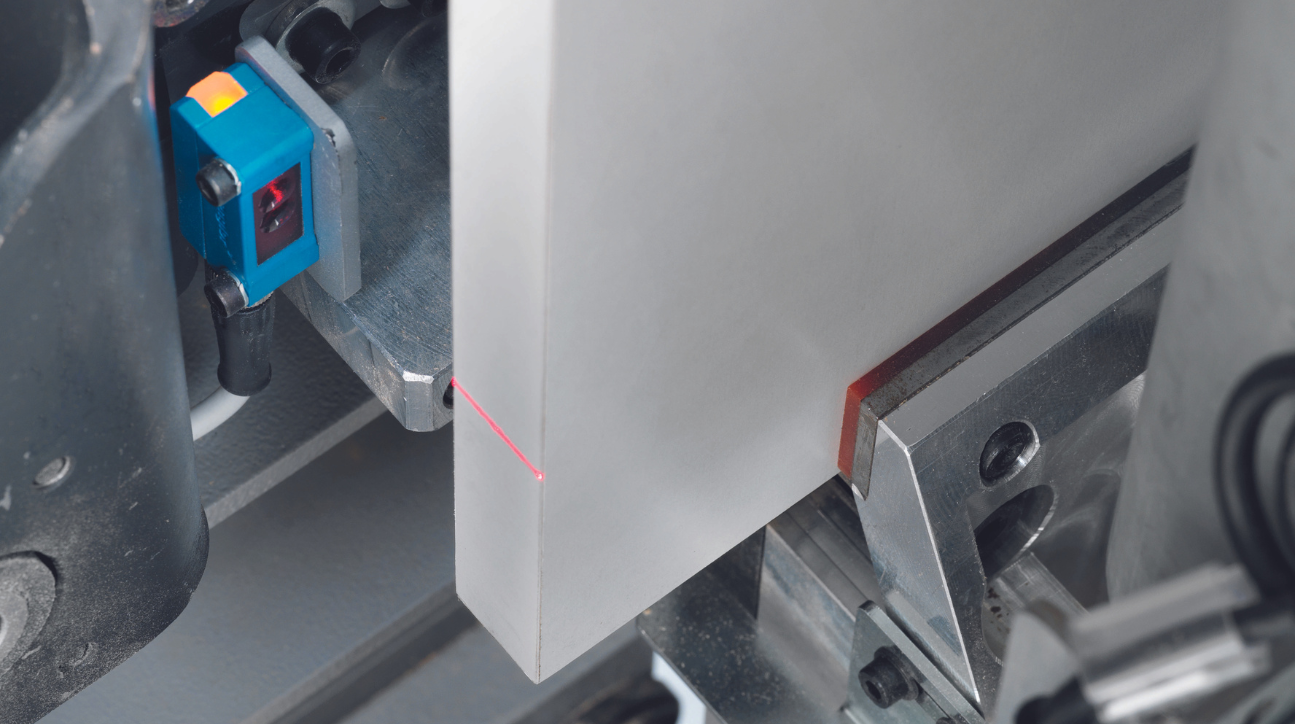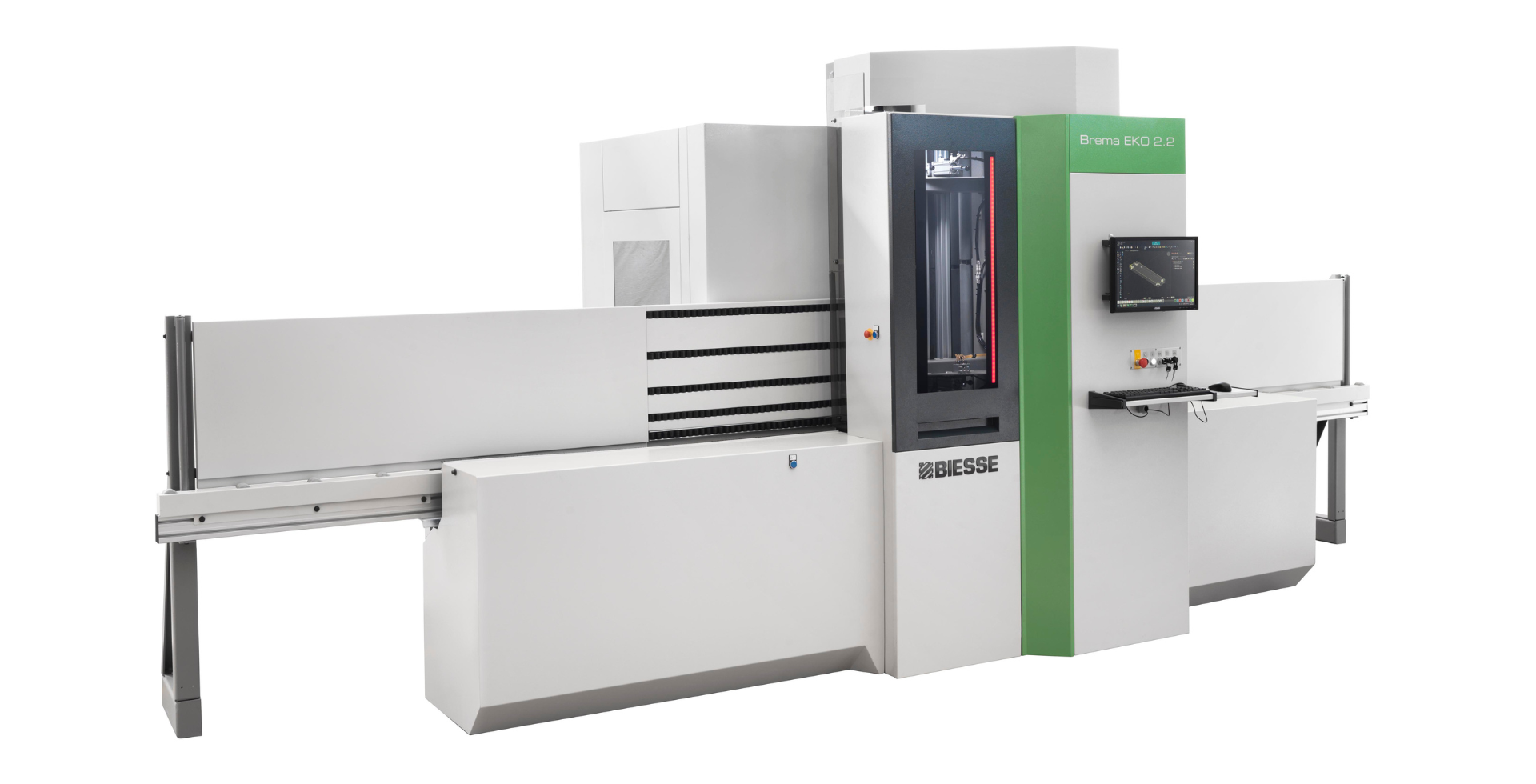
When Biesse’s cutting-edge panel detection feature calculates any variation in workpiece dimensions, it will automatically reset the drilling tool to ensure bore holes are in exactly the right position for assembly.
Even the slightest adjustments can help manufacturers of bespoke furniture to deliver the flawless finish that their customers demand.
No margin for tolerance with drilling
A millimetre might be a tiny unit of measurement, but when processing panels for kitchen, bedroom or bathroom cabinets and other items of furniture, it can make all the difference. Particularly when it comes to performing operations such as drilling pockets, holes, slots, and channels. If the panel is not perfectly square in terms of length or width, this will result in out-of-position bore holes.
Whilst such errors might go undetected in the workshop, misaligned holes will cause quality issues at the subsequent assembly stage. Edges won’t be flush, angles won’t be square, lines won’t be straight. This will have a detrimental impact on the overall finish.
For manufacturers of high-end furniture and bespoke kitchens who trade on clean lines and attention to detail, these flaws are unacceptable and bad for business. Unfortunately, they occur more frequently than most manufacturers would care to imagine. As the panel passes through the production workflow there are numerous opportunities for variations to slip in unnoticed.
But how can furniture manufacturers prevent this from happening?
Keeping tabs on tolerances
The answer lies in being aware of tolerances in panel dimensions and adjusting downstream processes to compensate for those variations. Or even better, employing a vertical CNC machine that will automatically adapt to those variations.
Most manufacturers of vertical CNC machines offer some form of tolerance detection device for panels, but these vary wildly in terms of their functionality. Whilst most machines available on the market will measure the panel’s length (X), on some it is an option, and just a few will also take into account the panel’s width (Y), which is crucial for guaranteeing accurate drilling.
Laser sharp accuracy
Biesse has developed an advanced system that deploys laser photocells to perform precision size detection on both the X and Y panel axes. This market-leading solution is unique in that it not only identifies variations in panel dimensions but will automatically adjust the drilling operation to the detected dimensions.

At the start of the machining process, the operator inputs the panel dimensions into the CNC’s software. During the infeed phase, the lasers will measure the panel length and height, with the encoder in the grippers detecting the actual thickness of the panel. If it measures larger or smaller than expected, the system will alert the operator to the variation and will automatically adjust the drilling operation settings to these ‘real’ measurements. Manufacturers can therefore be sure that the distance from the hole’s ‘centre point’ to the panel edge is as required. Drilling operations can also be machined in parametric mode and there is the option to programme the system to stop the process so the panel can be removed and resized if a variation is detected.
The laser measurement device is supplied as a standard feature on the X direction on all mid-range Biesse Brema work centres and is available as an add-on option for the Y direction.

The Z factor
Biesse’s Brema EKO CNC centres are the only mid-range machines on the market today to offer Z axis tolerance detection capabilities as standard. This feature comes into its own for ensuring drilling depth accuracy - a thicker than expected panel translates to holes that are not deep enough, preventing fittings from sitting flush on the panel surface, especially on the cam-hole joints. An encoder housed within the machine’s two grippers detects the actual thickness of the panel and communicates this data to the software, which then self-adjusts to the actual measurements and sets the counter pressure system to the correct panel thickness.
The dual gripper advantage
The dual gripper arrangement that Biesse uses on its EKO machines for panel handling is key to delivering reliable thickness measurement and precision drilling. In addition, this arrangement is more stable than systems that use either a single gripper or suction to hold the panel in place, which could cause a loss of panel referencing.
What’s more, the dual gripper system is more flexible than rival systems. The grippers move independently on a rack and pinion, which is particularly beneficial when machining long panels, as it makes it quick, easy, and precise to adjust the panel’s position as it moves through the machine. The longer the panel, the less re-gripping the machine will have to perform, which increases drilling accuracy.
Take, for example, a wardrobe side panel being processed with just one gripper: how many re-clamping and panel repositioning operations would be required, and how would this affect drilling accuracy? And with a vacuum pod system, consider how much time would be lost changing the positions of pods to process different panel sizes and materials. Biesse’s dual gripper system gives users the flexibility to machine batch size 1 production without any adjustment of the grippers.
The rack and pinion arrangement also helps to maintain consistently accurate performance, as, unlike systems that rely on rubber sliders, there is no reduction in accuracy induced by wear and tear over time.